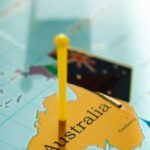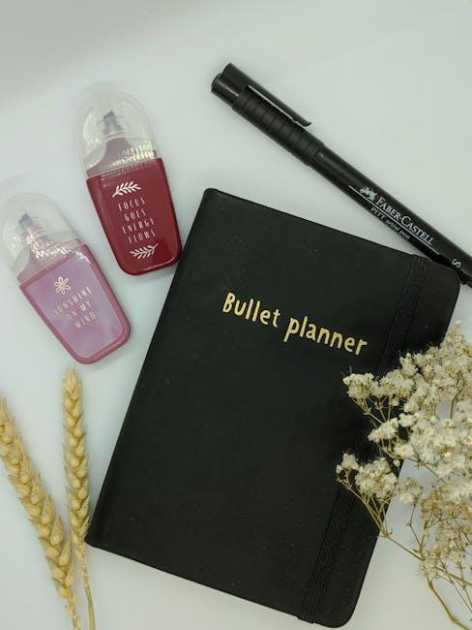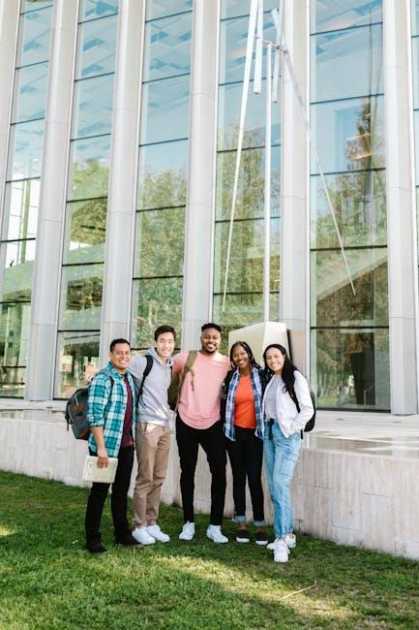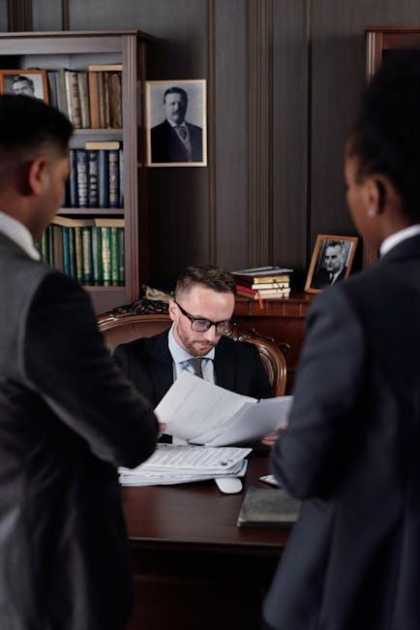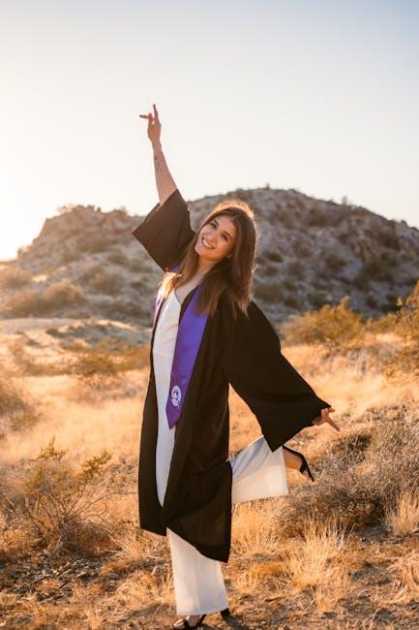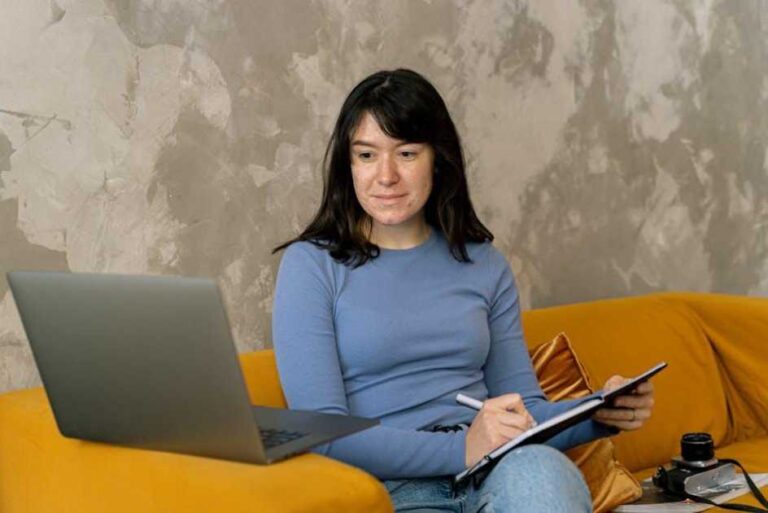Are you ready to embark on an academic adventure in the United States? Navigating the maze of visa applications can be daunting, but with the right guidance, it can become a straightforward journey. As the landscape of international education continues to evolve, understanding the process for obtaining a U.S. student visa—be it F1 for academic students, J1 for exchange visitors, or M1 for vocational students—is crucial for anyone aspiring to study in America. In this comprehensive step-by-step guide for 2025, we’ll break down the essential requirements, provide practical tips, and demystify the application process. Whether you’re aiming for a prestigious university or a specialized training program, this article will equip you with the knowledge you need to successfully secure yoru student visa and take the first step toward a transformative educational experience in the U.S. so, let’s get started on your path to academic success!
Understanding the Different Student Visa Categories and Their Purposes
When embarking on your academic journey in the United States, understanding the specific visa categories that cater to your educational objectives is crucial. The F1 Visa is the most common among international students, designed for those pursuing academic studies at accredited institutions, including universities and colleges. This visa allows students to engage in full-time study and provides opportunities for practical training related to their major field of study through programs like Optional Practical Training (OPT). On the other hand, the J1 Visa is intended for exchange visitors participating in an approved program that promotes cultural exchange, including students in internships, research scholars, and trainees. Last but not least, the M1 Visa is tailored for students enrolled in non-academic or vocational programs, such as technical colleges, where the focus is on practical, hands-on training rather than conventional academic coursework.
Understanding these distinctions not only assists in ensuring you apply for the correct visa but also impacts your overall experience in the U.S.Here’s a brief overview of each visa’s primary focus:
| Visa Type | Purpose | Eligibility |
|---|---|---|
| F1 Visa | academic Studies | Full-time students at accredited institutions |
| J1 Visa | cultural Exchange | Participants in approved exchange programs |
| M1 Visa | Vocational Training | students in non-academic programs |
Once you’ve identified the right visa category for your goals, your next steps will involve preparing relevant documentation and complying with application procedures tailored to that specific visa type. Be sure to stay informed about any changes or updates to the regulations governing student visas, as they can impact your application strategy and overall pathway to studying in the U.S.
Essential Documents You Need for a Successful Visa Application
When embarking on the journey to secure your student visa, it is crucial to be thoroughly prepared with the right documentation. The first step involves obtaining your form I-20, wich is essential for F1 and M1 visas. For J1 visas,you will need the DS-2019 form. These documents are provided by your educational institution upon your acceptance. Additional documents that will strengthen your application include:
- Valid passport: Ensure your passport is valid for at least six months beyond your intended stay.
- Visa Application Fee Receipt: Proof of payment for the visa application fee, commonly Form MRV.
- financial Evidence: Demonstration of sufficient funds to cover tuition and living expenses, which may include bank statements or scholarship letters.
- passport-sized Photographs: Recent photographs meeting specific U.S. visa photo requirements.
- Academic Records: Transcripts and diplomas from previous institutions, demonstrating your academic background.
Additionally, while assembling your application, consider organizing your documents in a systematic manner. Providing clear copies and translations of any non-English documents can expedite the processing of your application. Establishing a checklist for your essentials can make a notable difference. Below is a table summarizing the required documents:
| document | Description |
|---|---|
| Form I-20 / DS-2019 | Issued by your institution upon acceptance. |
| Valid Passport | Must be valid for at least six months beyond stay. |
| Application Fee Receipt | Proof of payment for the visa application. |
| Financial Evidence | Proof of sufficient funds for tuition and living expenses. |
| Passport-sized Photos | Must meet U.S. visa photo requirements. |
| Academic Records | Transcripts and diplomas from prior institutions. |
Navigating the Application Process and Avoiding Common Pitfalls
Applying for a student visa can be a daunting experience, but understanding the key steps can streamline the process and minimize headaches.Begin by gathering all necessary documents, including your I-20 or DS-2019 form, proof of financial support, and a valid passport. Make sure to check the specific requirements for your visa type (F1,J1,M1) as they can vary. It’s also essential to pay attention to deadlines; submitting your application too late can jeopardize your plans. Consider establishing a checklist to keep track of what you’ve completed and what remains to be done.
While navigating the system, be aware of common pitfalls.One frequent mistake is providing incomplete or inaccurate information on the application forms,which can lead to delays or rejections. Double-check your entries and ensure consistency across all documents. Additionally, some applicants underestimate the importance of the visa interview. Prepare thoroughly by practicing common interview questions and being able to articulate your study plans and future goals in the U.S.Remember, confidence coupled with a clear understanding of your purpose for studying will leave a strong impression.
Preparing for Your visa Interview: Tips and Best Practices
Approaching your visa interview can be an overwhelming experience, but with the right readiness, you can navigate it with confidence. Start by thoroughly researching your program and the institution you’ll be attending; familiarity with these details not only demonstrates your commitment but also equips you to answer related questions effectively. Additionally, practice your responses to common interview questions, such as your reasons for studying in the U.S. and how it aligns with your career goals. Keep your answers concise and clear, ensuring that you highlight your enthusiasm for the opportunity while being honest and straightforward.
Alongside prepared answers, consider bringing along essential documentation. Vital documents to include are your Form I-20, SEVIS fee payment receipt, visa application confirmation, passport, and financial evidence showcasing your ability to cover tuition and living expenses. A well-organized portfolio can make a significant impression. Additionally, don’t underestimate the power of body language—a firm handshake, maintaining eye contact, and a confident posture can go a long way in establishing rapport with the interviewing officer. Lastly, remember to dress professionally; first impressions matter, so aim for an appearance that reflects your seriousness about studying in the U.S.
Q&A
Q&A:
Q1: What are the different types of student visas available for studying in the USA?
A1: The USA offers three primary types of student visas: the F1 visa for academic students attending universities, the J1 visa for exchange visitors involved in programs that promote cultural exchange, and the M1 visa for students pursuing non-academic or vocational studies. Each visa has distinct eligibility criteria and application processes tailored to suit the specific needs of the students.
Q2: What is the first step in applying for a USA student visa?
A2: The very first step is to apply and get accepted into a Student and Exchange Visitor Program (SEVP)-approved institution. Once you receive your acceptance letter,you must pay the SEVIS fee and receive your Form I-20 (F1/M1) or DS-2019 (J1) from your school,which you’ll need for your visa application.
Q3: How do I fill out the visa application form?
A3: after you have your Form I-20 or DS-2019, you’ll need to complete the Online Nonimmigrant Visa Application form, known as the DS-160. This form requires detailed information about you, your academic program, and your personal background. It’s critically important to answer all questions accurately and thoroughly.Q4: What are the critically important documents I need for my visa interview?
A4: Essential documents include your passport, Form I-20 or DS-2019, the DS-160 confirmation page, visa application fee receipt, SEVIS fee receipt, and financial evidence showing you can support yourself during your stay. Additionally, be prepared to provide academic transcripts and standardized test scores, if applicable.
Q5: How do I schedule a visa interview?
A5: You can schedule your visa interview through the U.S.embassy or consulate website in your country. The availability of appointments may vary, so it’s advisable to book your appointment as soon as you have the necessary documents to avoid delays.Q6: What should I expect during the visa interview?
A6: During the interview,a consular officer will ask you questions regarding your intentions for studying in the USA,your chosen institution,and how you plan to finance your education. It’s crucial to stay calm, be honest, and present your case clearly. Remember, they are looking for genuine students with clear study goals.
Q7: How long does the visa process take?
A7: The visa process timeframe can vary based on several factors, including your country of residence and the time of year. Generally, it’s recommended to apply for your visa at least 3-4 months before your intended start date to allow ample time for processing and any unforeseen delays.Q8: What happens if my visa is denied?
A8: If your visa application is denied, the consular officer will provide reasons for the decision. Depending on the reason, you may have the option to address the concerns and reapply. It’s crucial to carefully review the feedback and consider seeking advice to strengthen your next application.
Q9: Can I work while on a student visa?
A9: Yes, students on F1 and J1 visas have certain work opportunities. F1 visa holders can work on-campus without special permission,while they may need authorization for off-campus employment. J1 visa holders also have specific work opportunities, usually tied to their exchange program requirements. M1 visa holders have limited work options post-study.
Q10: What are the final steps to settle into my academic life in the USA?
A10: Once you receive your visa and arrive in the USA, remember to attend an orientation session at your institution, get a student ID, and familiarize yourself with your new environment. Staying engaged with your academic community will greatly enhance your study abroad experience.
This step-by-step guide aims to simplify the process of applying for a USA student visa, ensuring that prospective students are well-equipped to navigate the journey to their academic goals.
Key Takeaways
navigating the path to obtaining a USA student visa—whether F1, J1, or M1—can seem daunting, but armed with the right knowledge and a structured approach, you can make the process manageable and straightforward. By following the steps outlined in this guide, from selecting the right visa category for your educational needs to gathering the necessary documentation and preparing for your visa interview, you’ll be well on your way to achieving your academic dreams in the United States.
Remember, every journey begins with a single step, and securing your student visa is a crucial one. Take the time to understand each requirement and don’t hesitate to seek assistance if needed. The opportunities that await you in the U.S.are vast and rewarding, capable of transforming your future. Safe travels on your educational adventure, and welcome to the enriching experience of studying in the land of opportunity!



